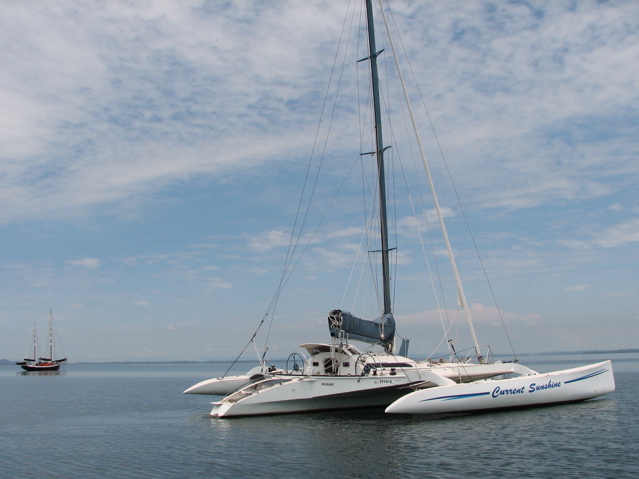Fresh barra, water buffalo and wild pig cooked using hot rocks, paper bark and gum leaves…
Patsy lived the first 25 or so years of her life in the traditional way – living in a paperbark shelter made by her dad, and following the seasons around Arnham land and learning how to live with the land. As do all her people, she married someone not from her country, and so she now lives in Kakadu with her husband who manages a water buffalo farm. She now lives in a house but still keeps her traditions alive by showing others the skills she learnt growing up. For eight years now she has guided whitefellahs like me on a bush tucker tour around the farm, which is within Kakadu national park.
When the park was formed in 1978 there were still many blackfellahs living in the bush in the way they always have – well, more or less. They used to get turtles and molluscs, and seeds from lilys, and many other things from the waters and mud of the billabongs until the water buffalo arrived – introduced by white man. Water buffalo thrived in the wetlands and proceeded to destroy the habitat and food source of the local people. But they soon learnt to use the water buffulo for food, which they came to depend on over a few generations.
When the National Parks wanted to cull the buffalo from Kakadu, it was essential to seek the agreement of the traditional owners about the way this should be done. It was agreed to create a buffalo farm within the park so that the food source of buffalo would still be available. This worked for a while, until the short lived agreement with the government expired and the funding for running the farm dried up. The elders met and came up with a plan to try to keep the farm open by running tours to show the traditional bush skills of the Bininj people – which is how these tours began. And since then Patsy has never had a day off from taking the tour on the days that there are tourists who want to go.
So, enough of background. Our first stop was to collect tubers, called bush carrots, but more like parsnips in colour and taste. Pasty showed me and others a few times how to spot the thin vine that shows where to dig for this tucker. But I didn’t find one for myself, despite them being plentiful in the area – but Patsy colelcted enough to cook up later for so we could all try some for taste
Next she showed us how to cut the top off a livingstonia palm and get the moist heart to eat right there – I reckon its similar to the centre of a pineapple, but not so sweet. Maybe a cross between a carrot and pineapple centre.
When you are a nomad you need baskest to carry bush tucker in so we also collected some palm fronds to later learn how to make string, which is then used to make baskets.
Green ants. If you ever walked in the top end you will have met the green tree ants – as you brush past their tree dozens will crawl onto you and bite just to let you know they’re there. Have you seen the nests they make by pulling the leaves together and glueing them together with a sticky web? Patsy took one of these containing thousands of ants and larvae and crushed it in her hand. She removed the leaves and continued to crush the ants and larvae in her until she had a ball of ants.
She chuckled and encouraged us to smell this ball – I would describe it as astringent vinegar lemon. Then she challenged us to eat some… maybe a teaspoon of it.
By a small stretch of imagination it could be lemon sherbert or lemonade – but then there’s nothing like it after chewing a bit and all thats left is the legs – but it would insult her to spit them out so I pressed on…
Used for as a bush medicine than a regular snack or tasty morsel. A passenger on another tour had a raging headache – enough to be convinced to try bush medicine. His headache left in a few minutes after having a big handful of Patsy’s green ant crush.
Crocs are common here but even so Patsy has a sense of where they are and when its safe to collect bush tucker from the water’s edge. Not many lily pad seed pods at this time of the year – the fat magpie geese have eaten most of them – but she collects enough for us to taste the seeds. Bland soft seeds about the size of peppercorns.
When they are plentiful she would collect them and grind them up to make a paste, or dough which is used for damper – bread cooked in the coals. But today we have damper made from wheat.
… more later





Hi Chris
Finally go back into Current Sunshine to track your (and your boats?) adventure. Sounds like a really great experience. Had a little taste of the territory some 20 years ago and was most impressed. Some very skilfull people living in that country.
Travel safe.
Sally